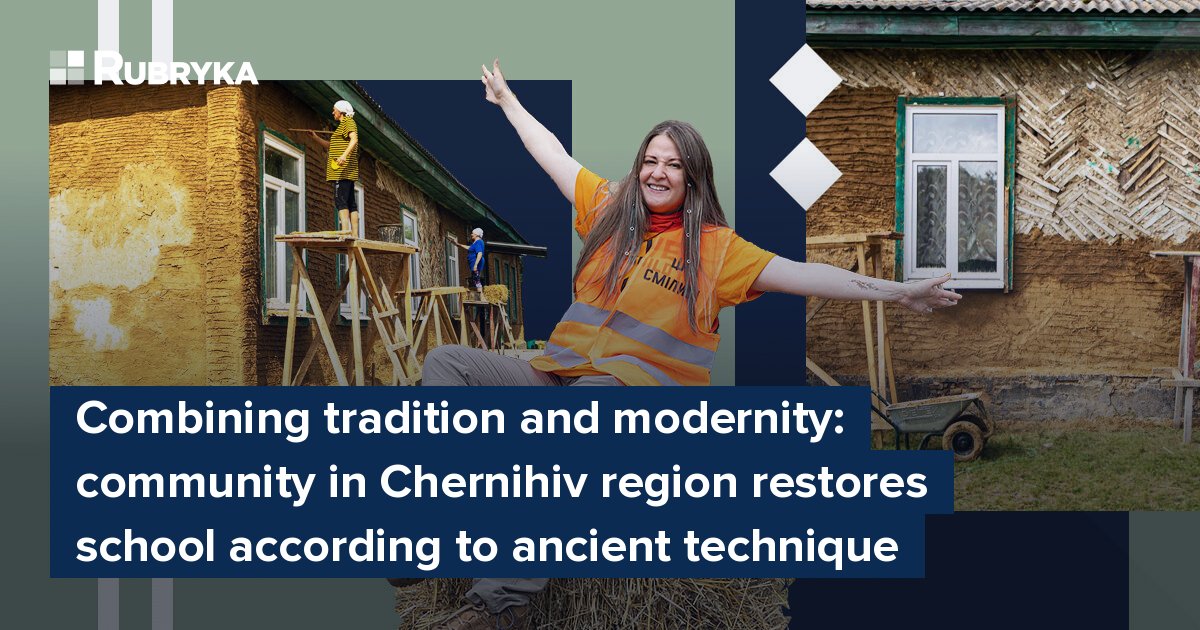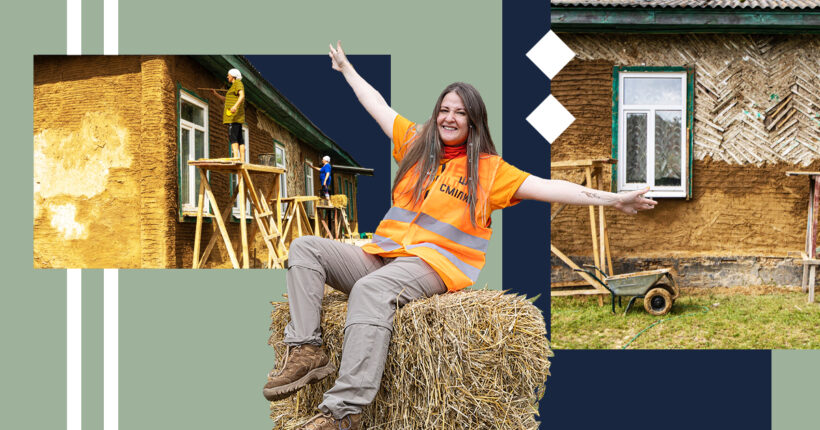
What is the problem?
Due to Russia's military aggression in Ukraine, 3,758 Ukrainian educational institutions were damaged by bombings and shelling. Three hundred sixty-three of them were turned into ruins by the Russians. Schools are an essential part of Ukrainian communities. The Russian invaders are trying to destroy as many educational institutions as possible.
What is the solution?
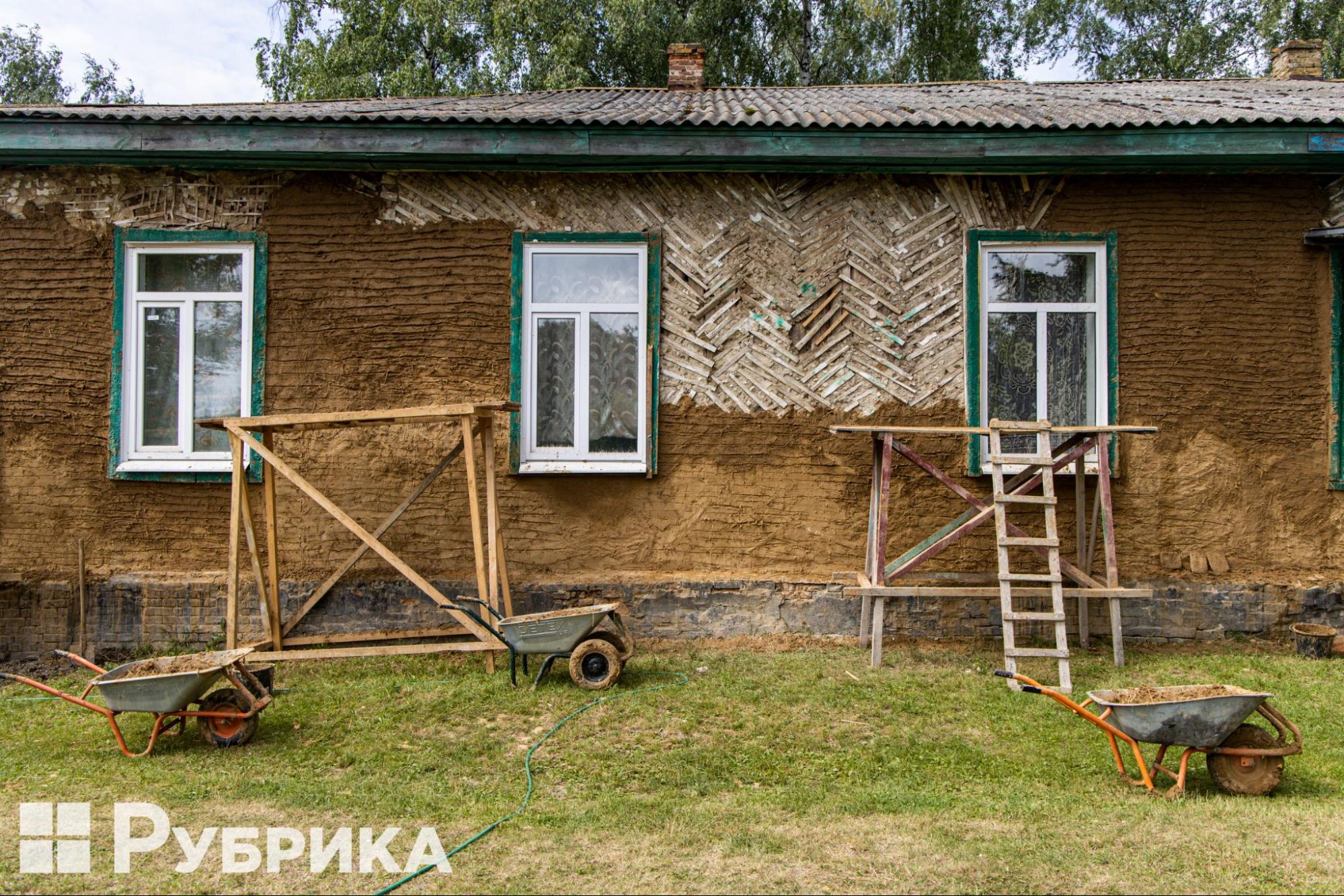
A century-old wattle and daub school in Lykhachiv, Chernihiv region.
Even though the war is still going on, destroyed and damaged schools are already starting to be rebuilt. State and private institutions, Ukrainian and foreign foundations, volunteers, and, of course, the community residents themselves join this great work. One of the affected educational institutions, in the walls of which Ukrainian children will soon be able to study again, is the lyceum in the village of Lykhachiv, in the Chernihiv region.
The charitable organization Brave is helping the community to restore the wattle and daub school, built almost a hundred years ago. All this was done with participation in the project "Rebuilding local schools for sustainability," which is implemented within the framework of the U-LEAD with Europe Program and with the financial support of the Service of Foreign Policy Instruments (FPI) of the European Commission.
How does it work?
Build Back Better
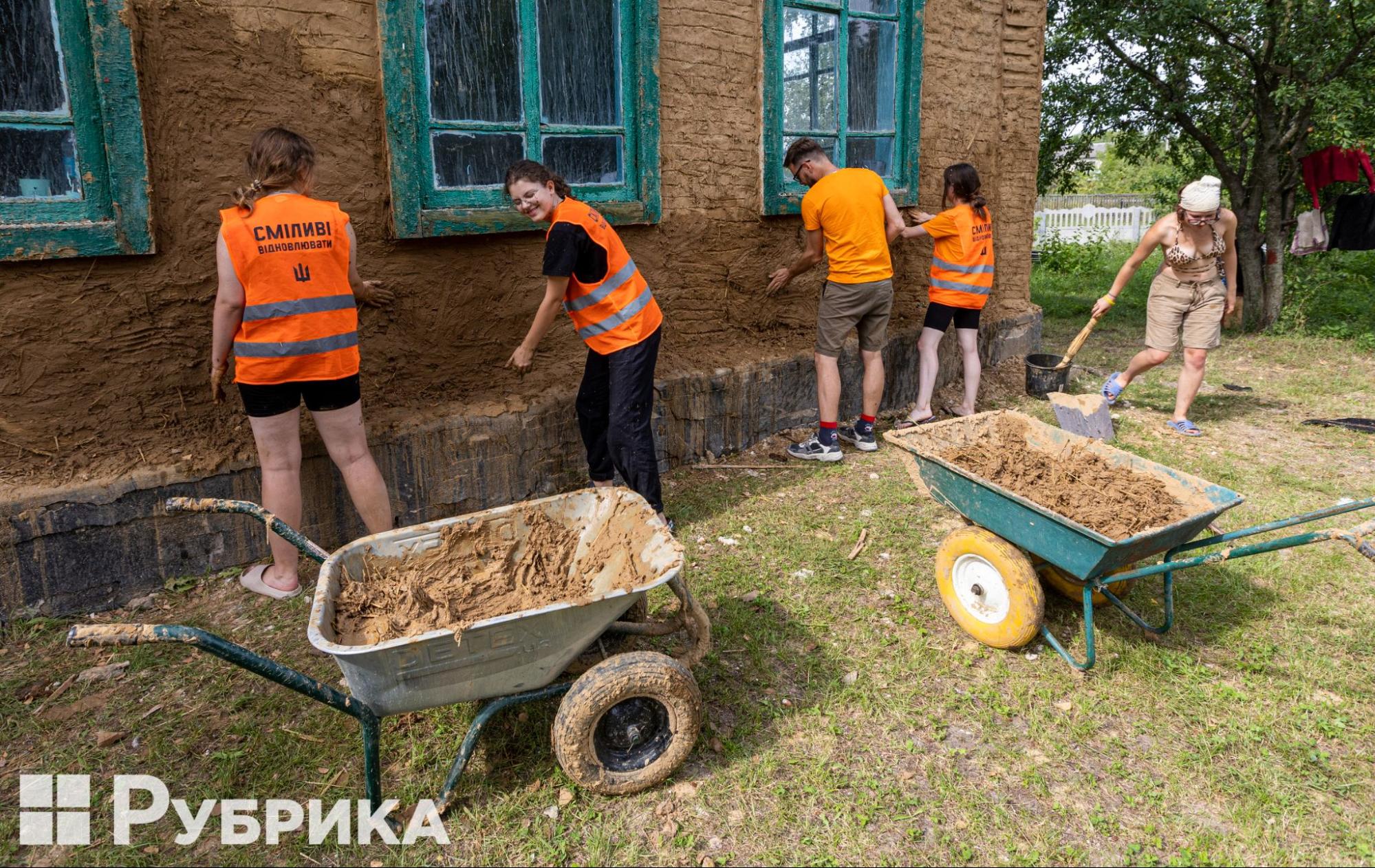
Brave charity fund restores the Lykhachiv lyceum as part of the project "Rebuilding local schools for Sustainability."
The U-LEAD initiative "Building Local Schools for Sustainability" launched in the spring of 2023. It aims to provide specific support to 12 selected communities affected by the war in three regions of Ukraine — Chernihiv, Kyiv, and Kharkiv. The project is multifunctional and applies the individual approach to each of the communities. The project assesses the damage and invests in repairing school buildings or, if the latter are structurally unsafe or destroyed, provides access to online learning through the creation of digital learning centers.
Schools are repaired and rebuilt by professional architects, construction crews, and volunteers — with and without professional experience, with expert advice. Reconstruction is carried out according to the principle of Build Back Better — to rebuild better than it was.
As part of this project, the Lykhachiv lyceum of the Mrynska village council in the Chernihiv region is also being restored. In early 2022, this school, built at the beginning of the 20th century using the ancient Ukrainian technology of wattle and daub houses, was damaged by fragments of a Russian missile.
The combination of modern and traditional became the concept of the renovation of the lyceum in Lykhachiv. The main feature of the restoration is the reconstruction of the walls using the plaster house technology. It is authentic, environmentally friendly, complies with all building regulations, and, after all, very cozy, warm, and beautiful.
Secrets of Ukrainian magic
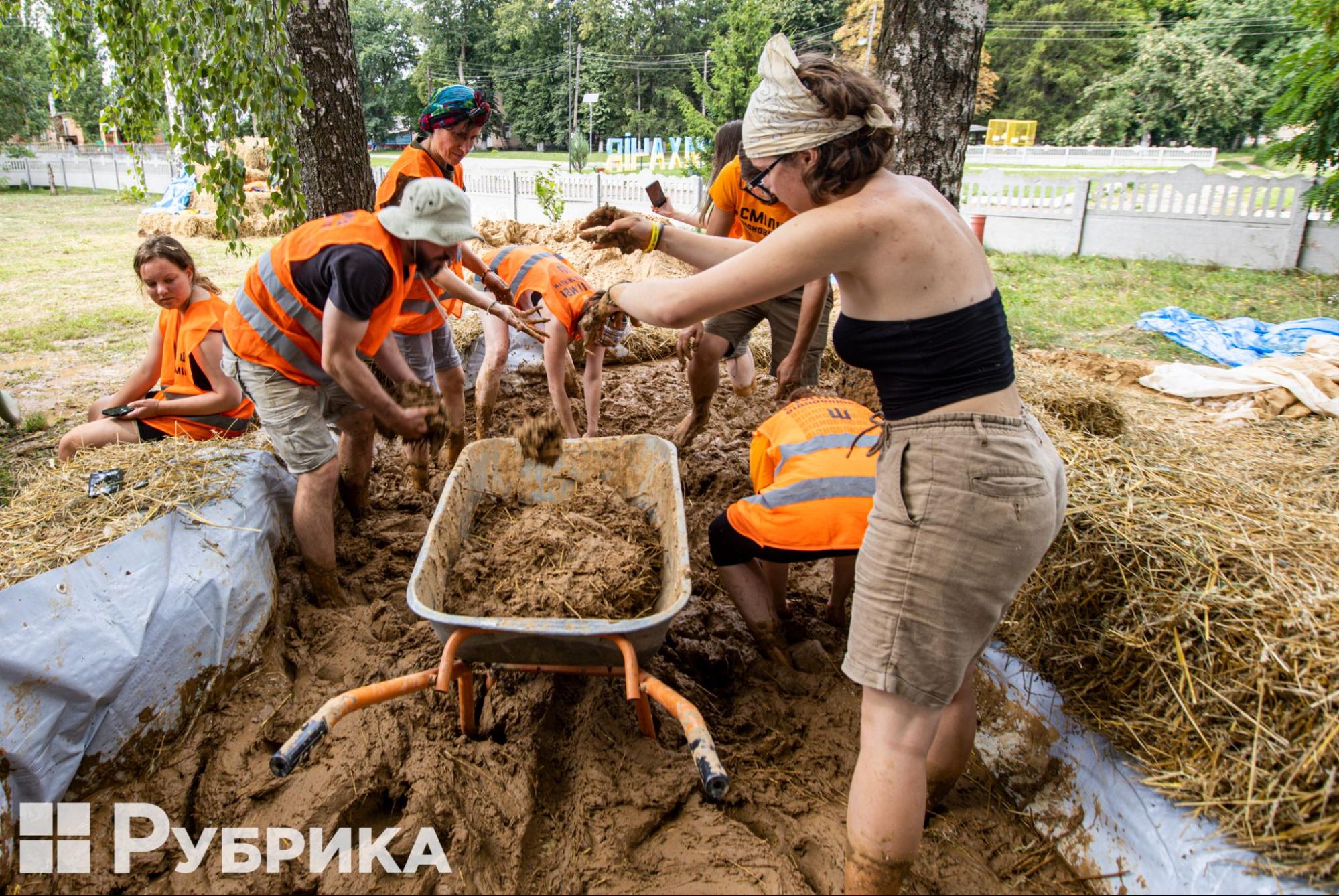
Only straw, sand, and clay are needed to restore a mud house.
Brave organized and held three volunteer meetings in August to restore the Lykhachiv lyceum. Mykola Stepanets, a master of his craft, became the curator of the volunteer work. According to the Brave volunteers, Stepanets is a person who possesses real magic.
Stepanets is a carpenter by trade. During the COVID-19 pandemic, he moved to the village, where he became interested in the technology of building wattle and daub huts. He started with the restoration of the family house, and now he consults and teaches the "magical" craft to all those who want to preserve the unique authenticity of the Ukrainian village, restore the house of their childhood, and live in an eco-friendly environment.
This school falls under the status of an architectural monument, although it is not. It was built in 1927 and is a large wattle and daub house. This means it is made of clay, and the team restores it here with such traditional technology. "I believe that such an approach is very appropriate now. First, we use local materials such as sand, clay, and straw in our work. This is a feature of a proud Ukrainian village — to build from what it has. The second component of traditional construction is the format of common work, which is more relevant than ever," Stepanets told Rybryka. "We can see that horizontal connections — like the volunteerism movement, the movement of shared values are what really works in Ukraine today."

Mykola Stepanets teaches volunteers the technique of daubing.
The master explains that the advantage of clay walls is the material's heat capacity — in summer, the temperature is cool in such walls, and in winter, the room is well heated by the stove and then keeps warm for a long time. In addition, you can learn the daubing technique in almost half an hour. The process does not involve any complications, and making a mistake and doing something wrong is practically impossible.
First, sand and clay are mixed with feet in a specially prepared container with the addition of straw to the right consistency. Subsequently, the walls, previously cleaned of the old coating, are wetted, and the finished mass is applied to them, which is leveled with hands and a spatula. Three layers of the finished mass should be applied to the walls.

The ancient technique of daubing helps preserve the authenticity of the school. The photo shows local volunteer Svitlana.
"Earlier, many people gathered to build such houses. They sang songs; everyone was in the mud, and everyone was in a good mood. There were 30 to 40, and even 50 people, to build one house in a day," says local volunteer Svitlana.
Locals say that the last time they worked on the mud house was many years ago. Now, together with Mykola Stepants, they are teaching this skill to younger volunteers. Ancient technology helps not only to restore the damaged school but also to preserve its authenticity.
The school that is in everyone's heart
Dozens of Brave volunteers joined the restoration of the Lykhachiv lyceum, as well as residents of the village of Lykhachiv. The community leadership helped with the materials — with the help of heavy equipment, they brought the required amount of straw and clay from local deposits. Only during the first race did the project participants collect about five tons of construction mix. At the same time, professional builders replaced the roof and did other, more professional work.
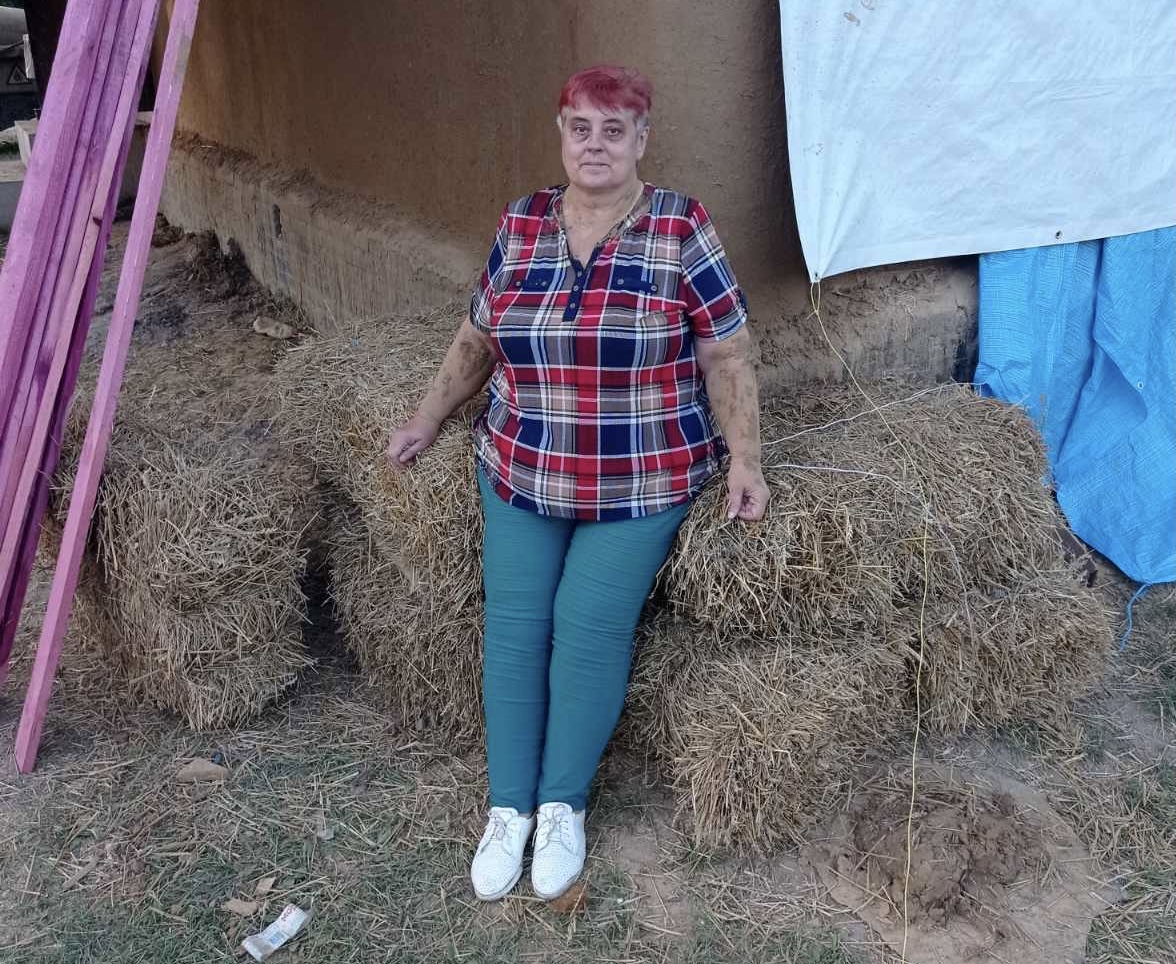
Director of the Lykhachiv lyceum, Svitlana Grosh.
The school's director, Svitlana Grosh, joined the reconstruction of her native school. Thanks to her, the Lykhachiv lyceum was included in the list of schools being restored as part of the U-LEAD with Europe Program. Grosh saw the advertisement for the "Rebuilding local schools for sustainability" initiative on Facebook. She admits that when she sent the application, she did not really hope that the school could win the project — the possible attention to the old village seemed too fantastic to the residents.
"I filled out the questionnaire, and they responded to our request! Guests have come to us to see and study everything. The selection was in three stages. At first, we were not promised anything, but in the end, our school was chosen for the program. And then everyone believed in the repair!" says Grosh.
The director of the lyceum says that many villagers — teachers, parents, students — came to volunteer to rebuild the school. She also participated in the project, although before that, she had seen this process only in childhood. She also prepared lunches for volunteers in the school canteen.
"Everything was very emotional. We made many friends during this project! I think we will continue communicating with them," says the director. "For me and the entire village, it is crucial that the school be restored. Although we have another, newer building (the senior classes are located there now), it was in this old building that several generations of residents of our village studied. When they come to our village for a meeting of graduates, everyone goes right here — to the old school. It is in everyone's soul."
Have they succeeded?
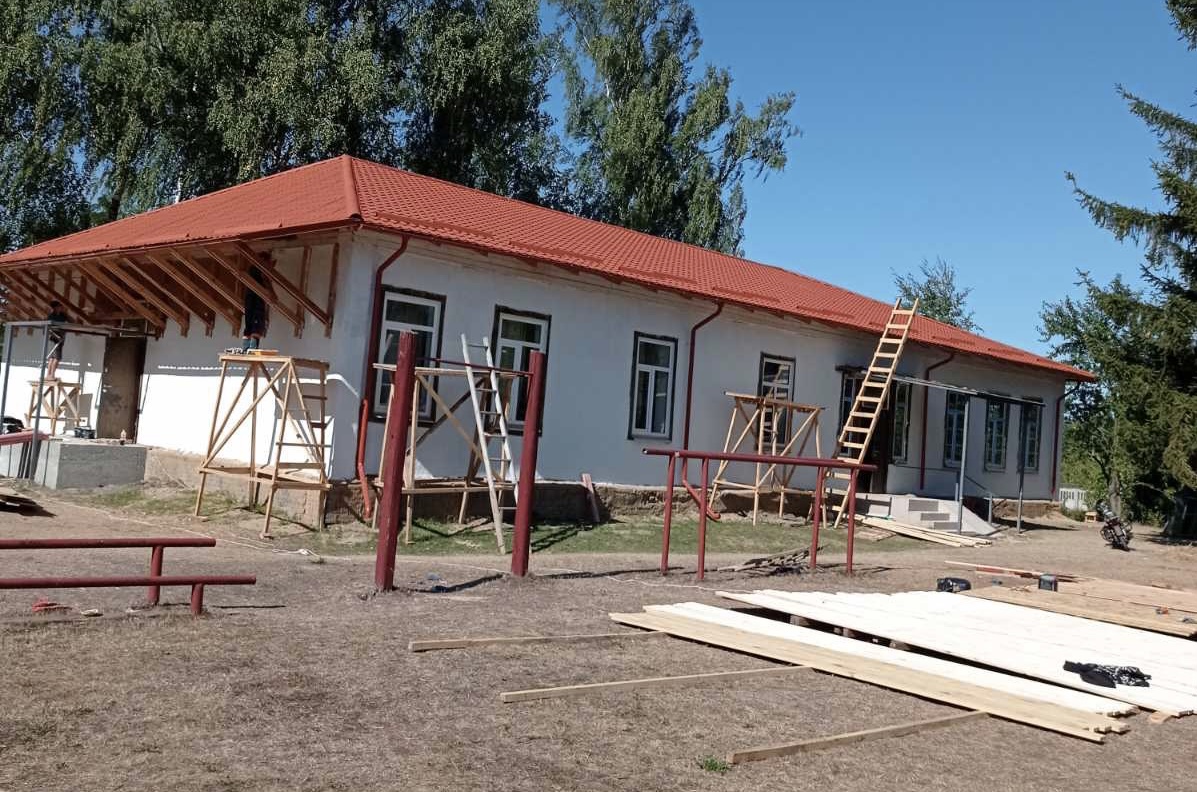
New walls, roof, and ramp were installed in the wattle and daub school.
As a result of the renovation, the school received not only new walls. As part of the renovation, a modern entrance group with a ramp appeared in the Lykhachiv lyceum, the roof and windows were replaced, and the ceilings in the premises were leveled. In addition, they installed modern lighting, as well as fire and sound alarms. Painting of the walls is currently in progress — the invited artist, Sofiia Kandaurova, is painting a mural with traditional Ukrainian ornaments on the school.
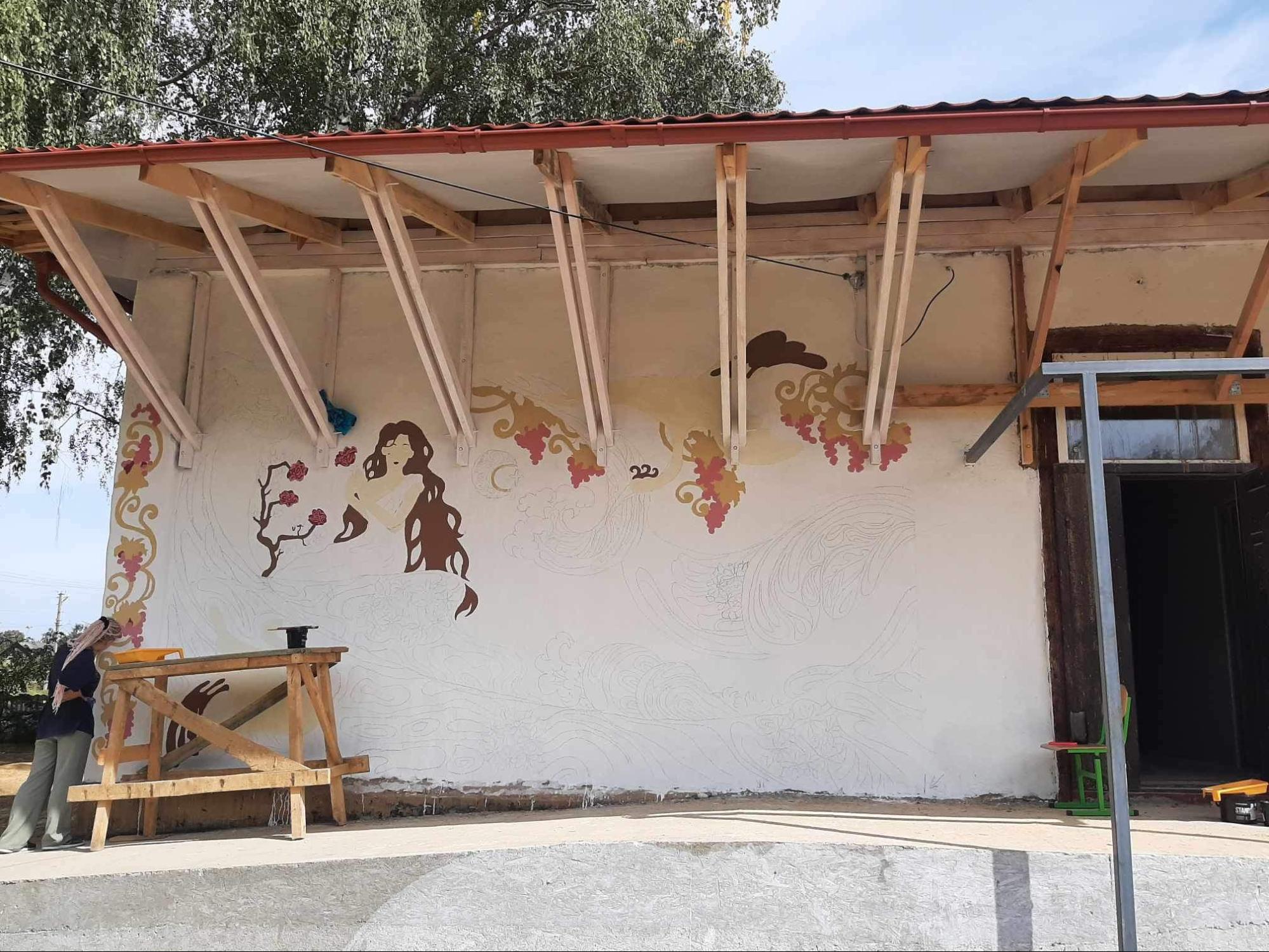
The artist Sofiia Kandaurova paints the walls of the school. Photo: Oleksandr Semenets
"When the old clay was knocked off the walls, I honestly got scared right away when I saw it all. It was terrifying; I thought that nothing would work out," admits village head Oleksandr Semenets. "But after the renovation, the school simply blossomed. I also studied here from the first grade, and I would happily sit at the desk again. It has become so modern, beautiful, and restored. I am glad that now the school has a ramp because a child with a disability can now attend our lyceum. She is from a family of resettlers and will come to study with us from a neighboring village." After seeing the result, the village of Mryn — the center of the community — also thought about restoring the building of the former school.
The reopening of the restored school is planned at the end of September. The primary school students, with whom the high school now shares the premises, will finally go to study in their classes — beautiful and neat.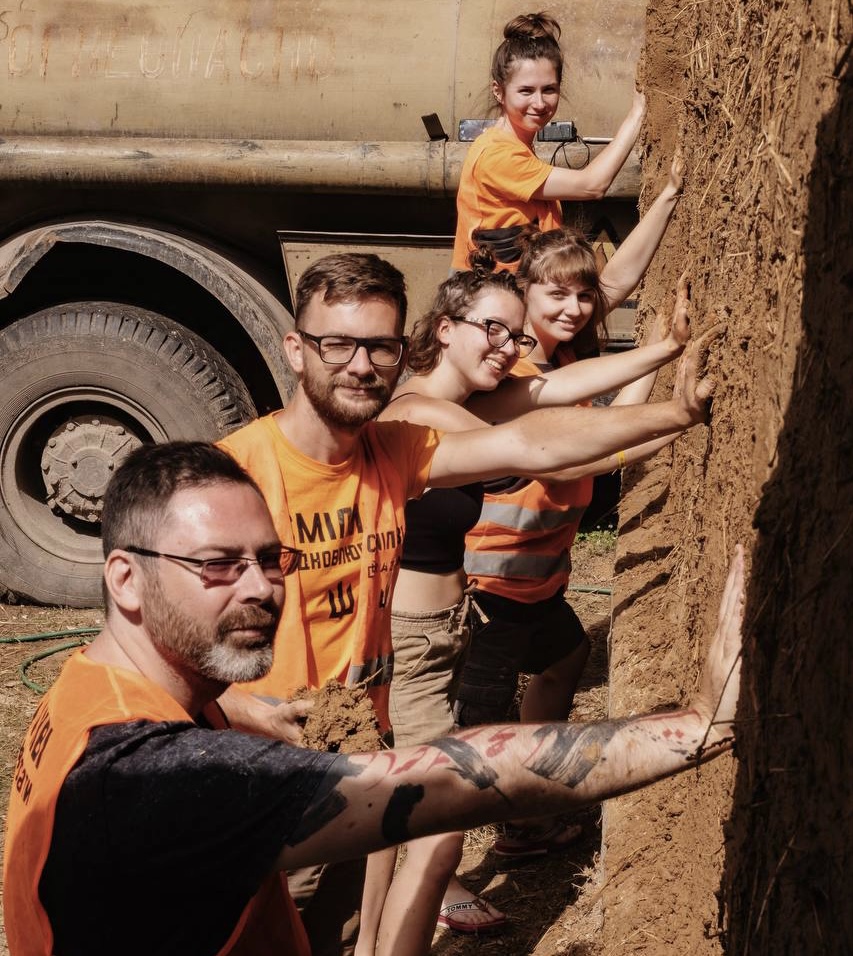 Each of the volunteers left a handprint on the wattle and daub house. Photo: Brave
Each of the volunteers left a handprint on the wattle and daub house. Photo: Brave
"I think our mission was not only to rebuild a wattle and daub school," comments Taisiya Orikhovska, a volunteer and a communicator of the "Brave" group. "We pushed the locals and showed that changes in our village depend on everyone. Everyone who joined our communities did so with great love for the village and the entire country."
Even more useful solutions!
The "Brave" Charitable Foundation is an organization for restoring Ukrainian cities and villages affected by the Russian occupation. The foundation's mission is not only to rebuild what was destroyed by the Russians. Its main tasks are to consolidate Ukrainians into a volunteer movement for the joint restoration of the country, to strengthen mutual assistance, and, most importantly, to restore trust in each other.
Since the beginning of May 2022, more than 2,000 volunteers from Ukraine, Europe, the USA, Canada, and Australia have been involved in the framework of the "Brave to Rebuild" project. Volunteers helped to clear debris and repair roofs and windows in 228 private houses and 153 apartments in Kyiv, Kharkiv, and Kherson regions. In total, assistance was provided to about 800 victims. Now, Brave is engaged in the restoration of schools that were damaged as a result of the actions of the aggressor country.
You can join the Brave and become a volunteer at the link.
This article was published as part of the Voice of Communities campaign, which is part of the Program for Ukraine on local empowerment, accountability, and development U-LEAD with Europe, jointly funded by the EU and its member states Germany, Poland, Sweden, Denmark, Estonia, and Slovenia to support Ukraine on its way to strengthening local self-government. U-LEAD promotes transparent, accountable, and multi-level governance in Ukraine that responds to the needs of citizens and empowers communities.


